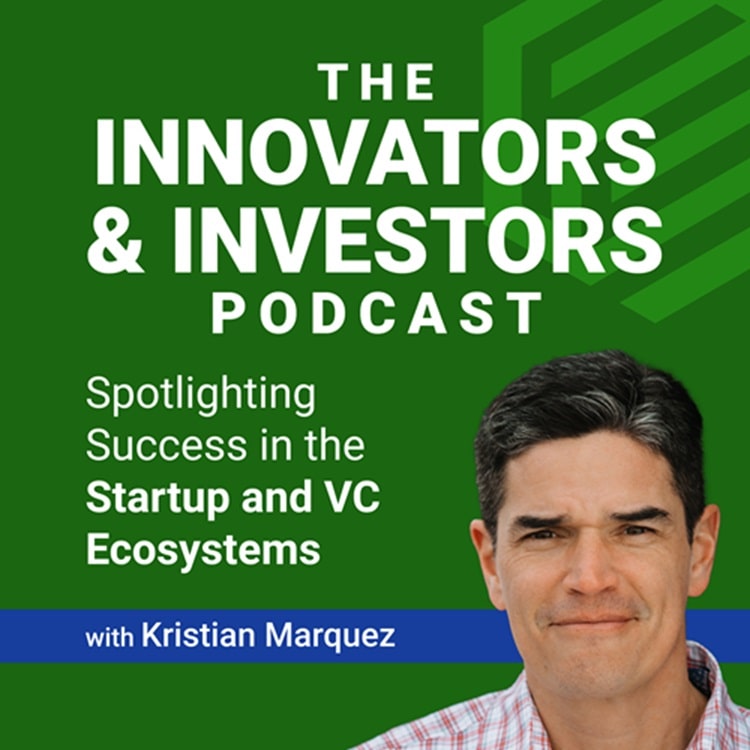Decoding the VC Sentiment: How Founders Can Adapt Their Pitch to the Current Fundraising Climate
The venture capital landscape has undergone a significant shift. Gone are the days of prioritizing hyper-growth at all costs. Today, VCs are scrutinizing metrics like profitability, capital efficiency, and runway with laser focus. For founders seeking seed or Series A funding, understanding and adapting to this new reality is no longer optional – it’s essential for survival. This article will dissect the current VC sentiment, explore the support founders need in this environment, and provide actionable strategies for crafting a compelling pitch that resonates with today’s investors.
The Changing Priorities of Venture Capital
The low-interest-rate environment that fueled rapid growth and abundant capital availability is over. Macroeconomic uncertainty, inflation, and geopolitical risks have created a risk-averse climate. As a result, VCs are placing a greater emphasis on sustainable growth, profitability, and capital preservation. This shift impacts every aspect of the fundraising process, from the metrics investors prioritize to the questions they ask.
 From Growth at All Costs to Sustainable Growth: Previously, many VCs were willing to overlook high burn rates and negative unit economics in pursuit of rapid user acquisition and market share. Now, investors are demanding evidence that a company can achieve profitable growth.
From Growth at All Costs to Sustainable Growth: Previously, many VCs were willing to overlook high burn rates and negative unit economics in pursuit of rapid user acquisition and market share. Now, investors are demanding evidence that a company can achieve profitable growth.- Capital Efficiency is King: The ability to generate revenue with minimal capital expenditure is highly valued. Founders need to demonstrate a clear path to profitability without relying on constant infusions of cash.
- Runway, Runway, Runway: VCs are paying close attention to a company’s runway, or the amount of time a company can operate before running out of cash. In the current environment, a longer runway provides more flexibility to navigate economic uncertainty and achieve key milestones.
What Type of Support Do Founders Need? Navigating the Venture Assistance Landscape
Fundraising in the current climate demands more than just a great idea. Founders need access to resources and expertise that can help them refine their business model, optimize their operations, and craft a compelling narrative for investors. Venture assistance programs, accelerators, and advisors can play a crucial role in providing this support.
Essential Areas of Support:
- Financial Modeling and Forecasting: Creating realistic financial models that demonstrate a clear path to profitability is crucial. Founders need support in developing accurate forecasts, understanding key financial metrics, and articulating their financial strategy.
- Go-to-Market Strategy Optimization: In a competitive market, an effective go-to-market strategy is essential for acquiring customers efficiently. Founders may need assistance in refining their target market, developing a compelling value proposition, and optimizing their sales and marketing channels.
- Operational Efficiency and Cost Management: VCs are scrutinizing operational efficiency more closely than ever before. Founders need support in identifying areas where they can reduce costs, streamline processes, and improve productivity.
- Pitch Deck Refinement and Storytelling: Crafting a compelling narrative that resonates with today’s investors requires a deep understanding of their priorities and concerns. Founders need support in refining their pitch deck, articulating their value proposition, and demonstrating their understanding of the market.
- Investor Network and Introductions: Access to the right investors can make all the difference. Venture assistance programs and advisors can provide valuable introductions to VCs who are aligned with a company’s stage, industry, and vision.
- Legal and Compliance Support: Navigating the legal and regulatory landscape can be complex and time-consuming. Founders need access to legal expertise to ensure they are compliant with all applicable laws and regulations.
Real-world Scenario: I worked with a seed-stage SaaS company that had a promising product but lacked a clear understanding of their unit economics. Through a venture assistance program, they received mentorship from experienced finance professionals who helped them develop a robust financial model. This allowed them to identify areas where they could reduce costs and improve profitability, which ultimately made them a more attractive investment opportunity.
Adapting Your Pitch: Speaking the VC’s Language
The key to successful fundraising in the current environment is to tailor your pitch to the priorities of today’s VCs. This means focusing on profitability, capital efficiency, and runway, and providing concrete evidence to support your claims.
Key Elements of an Effective Pitch:
- Lead with Profitability Potential: Don’t bury your path to profitability. Highlight it upfront and demonstrate how you plan to achieve it. Show how your business model is designed for sustainable growth, not just rapid expansion.
- Showcase Capital Efficiency: Demonstrate that you can generate significant revenue with minimal capital expenditure. Highlight your customer acquisition cost (CAC), lifetime value (LTV), and other key metrics that illustrate your capital efficiency.
- Emphasize a Long Runway: Clearly articulate your cash burn rate and demonstrate how you plan to extend your runway. Show that you are proactively managing your finances and have contingency plans in place.
- Focus on Unit Economics: Investors are closely scrutinizing unit economics to determine the long-term viability of a business. Clearly articulate your unit economics and demonstrate that they are healthy and sustainable.
- De-risk Your Business: Investors are looking for companies that have de-risked their business as much as possible. Highlight any milestones you have achieved, partnerships you have secured, or customers you have acquired.
- Be Transparent and Realistic: Avoid making unrealistic projections or exaggerating your achievements. Investors appreciate transparency and honesty, and they are more likely to trust founders who are realistic about the challenges they face.
Actionable Strategies for Crafting a Compelling Pitch
Beyond understanding the key elements of a pitch, founders need practical strategies to translate this knowledge into a compelling presentation. Here are some actionable steps you can take to adapt your pitch to the current fundraising climate:
1. Conduct a Thorough Market Analysis:
Demonstrate a deep understanding of your target market, including its size, growth potential, and competitive landscape. Use data-driven insights to support your claims and show that you have a clear understanding of your customer.
Example: Instead of saying “The market for our product is large and growing,” say “Our target market is the $5 billion market for sustainable packaging within the e-commerce industry. This market is projected to grow at a CAGR of 15% over the next five years, driven by increasing consumer demand for eco-friendly products and stricter government regulations.”
2. Develop a Detailed Financial Model:
Create a comprehensive financial model that projects your revenue, expenses, and cash flow for the next 3-5 years. Use realistic assumptions and sensitivity analysis to demonstrate the potential impact of different scenarios.
Example: Include a sensitivity analysis that shows how your profitability would be affected by changes in key assumptions, such as customer acquisition cost, churn rate, or average order value. This demonstrates that you have carefully considered the risks and uncertainties associated with your business.
3. Highlight Your Competitive Advantages:
Clearly articulate your competitive advantages and explain how you are differentiated from your competitors. Focus on the factors that will allow you to win market share and generate sustainable profits.
Example: Instead of saying “We have a great product,” say “Our product is the only solution on the market that combines X, Y, and Z. This allows us to provide a unique value proposition to our customers, resulting in a 30% higher customer retention rate compared to our competitors.”
4. Showcase Customer Traction and Validation:
Provide evidence of customer traction and validation, such as customer testimonials, case studies, or pilot programs. Show that you have a proven product-market fit and that customers are willing to pay for your solution.
Example: Share a case study that highlights the positive impact of your product on a customer’s business. Quantify the benefits in terms of increased revenue, reduced costs, or improved efficiency.
5. Emphasize Your Team’s Expertise and Experience:
Highlight the expertise and experience of your team, particularly in areas that are critical to the success of your business. Show that you have the right team in place to execute your vision.
Example: Instead of simply listing your team members’ titles, highlight their relevant experience and accomplishments. For example, “Our CTO has over 15 years of experience in software development and has previously built and scaled successful technology platforms.”
6. Practice Your Pitch and Seek Feedback:
Practice your pitch extensively and seek feedback from experienced entrepreneurs, investors, or advisors. Refine your pitch based on the feedback you receive and ensure that it is clear, concise, and compelling.
Anecdote: I remember one founder who initially struggled to articulate his value proposition. After several rounds of practice and feedback, he was able to refine his pitch to the point where it resonated strongly with investors. He ultimately secured funding from a top-tier VC firm.
The Importance of Venture Assistance in a Challenging Fundraising Environment
In the current venture capital landscape, the role of venture assistance programs is more critical than ever. These programs provide founders with the resources, expertise, and network they need to navigate the fundraising process and build successful companies. They can offer invaluable support in areas such as financial modeling, go-to-market strategy, pitch deck refinement, and investor introductions.
Example: Many accelerators offer structured programs that provide founders with mentorship, workshops, and access to a network of investors. These programs can significantly increase a founder’s chances of securing funding and building a successful business.
Future Trends in Venture Capital
While the current emphasis on profitability and capital efficiency is likely to persist in the near term, it’s important to stay abreast of emerging trends in venture capital. Some potential future trends include:
- Increased Focus on Specific Sectors: VCs may increasingly focus on specific sectors that are perceived to be more resilient to economic downturns, such as healthcare, cybersecurity, and enterprise software.
- Greater Emphasis on Impact Investing: Investors may place a greater emphasis on companies that are addressing social or environmental challenges.
- Rise of Niche Funds: Specialized venture funds that focus on specific stages, industries, or geographies may become more prevalent.
- More Diligence and Scrutiny: Expect VCs to conduct even more thorough due diligence and scrutinize every aspect of a company’s business.
Adapting to Thrive
The venture capital landscape is constantly evolving, and founders must adapt their strategies to thrive in the current environment. By understanding the priorities of today’s VCs, crafting a compelling pitch, and leveraging venture assistance resources, founders can increase their chances of securing funding and building successful companies. The key is to focus on profitability, capital efficiency, and runway, and to demonstrate a clear path to sustainable growth. Remember that transparency, realism, and a strong team are essential for building trust with investors and securing the capital you need to achieve your vision. While the funding environment may be more challenging, opportunities abound for founders who are prepared to adapt and execute.


